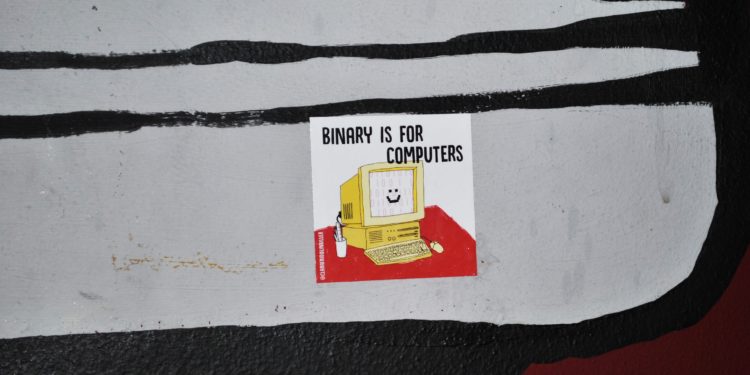Is it time to re-think the labels we use for gender identity? Coaching and leadership expert Christine Locher challenges traditional social stereotypes that she believes are over-generalised and outdated.
“So, have you decided yet?” I get this question a lot. There is nothing to decide. I remember my first gender identity conversation at the age of five in a Catholic Kindergarten in rural Southern Germany. That did not go well.
I got told to not “move like a boy” as I wasn’t one, and got put in my place. On the other side of the room, with the girls. None of this made any sense to me. Neither one nor the other. I was just being me. In a play room that was cut in half with the construction corner for the boys and the dolls’ corner for the girls, there was nowhere for me to go.
I’m over 40 now, and on occasion, this still happens although the play rooms have since got bigger and have tables and chairs. Gender comes in a variety of denominations, and that might make sense to you – or not. The discussion however remains largely binary, and data is usually inaccurate by not offering people safe or meaningful options to properly self-declare. This means, part of the picture is missing.
Two big options are neat, they make the world look more manageable. That is tempting. This also lends itself to pitching one group against the other. As we crave clarity, we resent the “misfits”, people that challenge our neat groupings, we take them personal.
So, let’s loosen up the binary a little bit. Imagine a square where option A (e.g. female) is in the bottom left corner. Option B (e.g. male) is in the top right. So far, so familiar. Now let’s imagine the top left corner represents “both”. And now imagine the bottom right corner to represent “neither”. And now imagine a spot outside that square that represents “something different entirely”.
With all these options: What might that feel like? What would you lose? What would you gain? What would that make possible? What challenges would that create, for the person and for their surroundings? What would a person there need?
You might want to stop and take a moment, walk yourself through these options and connect on an emotional level. Use this like a form of mental yoga, a stretch that might help you get “unstuck” and open up a whole new set of ideas and perspectives, and a deeper empathy with people different from you. As the saying goes, all frameworks are wrong. Some are useful. I’d hope this is one of the useful ones, it is called “Tetralemma”. Actual conversations will then help to bring that to life. In a world that is increasingly polarized, developing this kind of practice is the greatest gift – to yourself and to everyone else.
Christine works in coaching and leadership development and is a writer. She supports individuals and growing businesses to bring values to life, building a culture and on making better decisions. She recently launched the book “Values-based: Career and Life Decisions that make Sense”. Christine is a Fellow of the RSA and the Learning and Performance Institute. She identifies as nonbinary, somewhere between “both” and “neither”.
Click here to go back to the newsletter.


